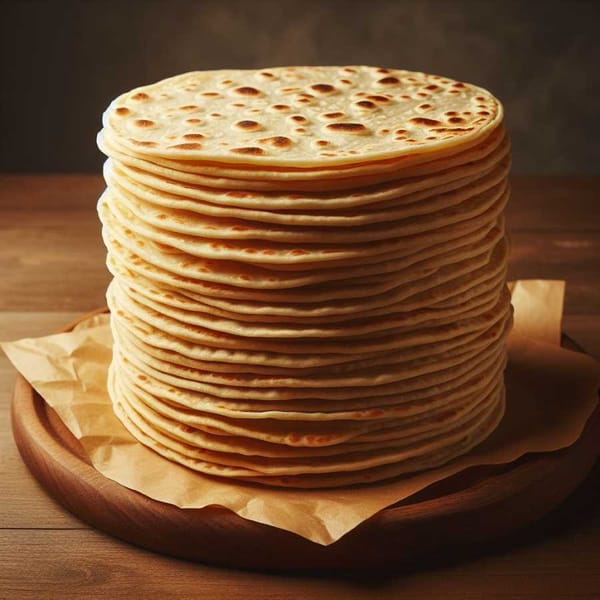The extraordinary materials called superalloys
Discover a family of materials known as superalloys, a name that is entirely justified, as they include some of the most impressive engineered materials ever produced.

Working at temperatures close to the material's melting point and spinning hundreds of times per second, while carrying a load equivalent to the weight of a car, the turbine blades of a jet engine must withstand what is possibly one of the most extreme environments any engineered material could face.
So how have engineers found materials capable of withstanding these working conditions? The answer lies in a family of materials known as superalloys, a name that is entirely justified, as they include some of the most impressive engineered materials ever produced.
The use of metals by man has its origin in the human desire to possess ornamental objects, although later he would be inclined to manufacture more resistant tools to replace those made with other materials, such as bones and stones, which facilitated the development of his daily activities, by providing better results.
The first metals used by man were copper, gold, and silver, which are almost pure. Later, advances in human knowledge, particularly in the manufacturing processes, led to the development of metal alloys, the union of two or more metallic elements that result in a new material with different properties from its predecessors.
The term superalloy was first used after World War II to describe a group of new alloys that would be used in the manufacture of turbochargers and aircraft turbine engines, which require high mechanical performance and great resistance to oxidation, at high temperatures. The applications in which superalloys are used have extended to the aerospace industry, marine industry, production of submarines, nuclear reactors, heat exchanger tubes, and gas turbines, as well as in the chemical process industry, among some other applications.
The high performance of today's engineered materials is large because we now understand much more - at the atomic level - about how the materials are made and how they work. Some of the theories developed in the last 50 years provide useful information about the bonding of atoms of different elements, for example, a metal alloy intended to form a new material with different characteristics and superior properties.
On the other hand, we have sixty years of empirical data that can be used, including statistical methods capable of deducing how a new material might behave. Although predicting how atoms behave and interact within a material, or when different materials are mixed to form a new one, is a complicated subject to understand; however, the task of developing new materials is by no means impossible.
Types of superalloys
Superalloys are normally based on the chemical elements Fe, Ni, Co, and Cr (iron, nickel, cobalt, and chromium) which, being high melting point elements, give rise to alloys that can operate at very high temperatures. When combined with other elements such as W, Mo, Ta, Nb, Ti, and Al (tungsten, molybdenum, tantalum, niobium, titanium, and aluminum), among others.
The resulting properties are modified outstandingly, varying according to the original properties of the alloying elements. Ni-based superalloys are used at higher temperatures than any other common alloy system (a temperature close to 90% of their melting point is applied). The key is the addition of Al or Ti, as it has been found that by adding these elements to Ni, the resulting alloy becomes more resistant to high temperatures.
What is meant by resistance?
If a force is applied to a metal, causing it to stretch to a certain point, the metal returns to its original shape; but beyond a certain level of loading, the metal begins to change, permanently. We call this the elastic limit of a metal.
In the case of most materials, this limit decreases as the temperature rises, because when a metal is heated, it usually becomes softer; but, in superalloys based on Ni, the elastic limit remains constant and then begins to increase, reaching a maximum close to 700 °C, which is the working temperature of a turbine engine.
How is resistance obtained?
In an alloy, small particles begin to precipitate and embed themselves into all the material. Seen under the electron microscope, in superalloys, the precipitates look like small cubes that organize themselves like buildings and roads in a large city seen from the air, but are nothing more than atoms arranged in different configurations or crystalline structures.
The road or matrix is made of a structure called by the Greek letter ' γ', known as the gamma phase and, we will call the buildings gamma prima. The 'γ' phase is formed at a certain concentration and temperature; the atoms, in turn, spontaneously organize themselves to be placed in the corners of each of the faces of the unitary cell. Deceptively, it may seem that there are more atoms of the alloying element (Al, Ti) than those of Ni, but, in reality, there are three times as many Ni atoms: Ni3(Al, Ti). This is because the cells are stacked to form a crystal; thus, each atom in the corner is shared with eight other cells, but the atoms in the centers of the faces are shared by only one cell.
The amount of alloying elements (Al, Ti) added is a function of the desired volumetric fraction of the ?' phase in the matrix. In some superalloys, the volumetric fraction is close to 70% and, in turn, the phase size can be precisely controlled by applying heat treatment.
Microstructure of superalloys
When the precipitates are extremely small, they always precipitate with spherical morphologies. In fact, for a given volume of a precipitate, a sphere has less surface area than a cube and, therefore, is the form capable of minimizing the energy generated at the surface. With a coherent precipitate - that is, when the precipitate network parameter is similar to the atomic network of the matrix - distortions are generated in both networks due to the effect of the increase in the size of the precipitate, and the energy generated at the surface can be minimized, by forming cubes. Thus, when these precipitates grow, the morphology can change from spheres to cubes or plates.
Evolution and future of superalloys
The first-generation superalloys increased the content of Al, Ti, Ta, and Nb (aluminum, titanium, tantalum, and niobium), to increase the volumetric fraction of the precipitates. Those of the second and third generations added, approximately, between 3 and 6% of Re (rhenium), to increase the working temperature. Those of the fourth, fifth, and sixth generations have been developed to incorporate additions of Ru (ruthenium) for the same purpose.
Meanwhile, a new area of research in the creation of alloys and superalloys is being developed through the addition of nanoparticles that act as reinforcers. Moreover, through studies on nanoparticles, it would be possible to extend research into superalloys to other aspects such as the formation of nanostructured superalloys.
About half of the currently used superalloys work at temperatures very close to the melting temperature of the alloy, and suffer from an unacceptable level of creep. Therefore, the development of superalloys focuses on reducing weight; improving oxidation and corrosion resistance; and maintaining the strength of the alloy at high temperatures, and even increasing working temperatures.
By Carlos G. Garay R., José Luis Hernández Rivera, Cynthia D. Gómez Esparza, José de Jesús Cruz Rivera, Roberto Martínez Sánchez, Source CyD




